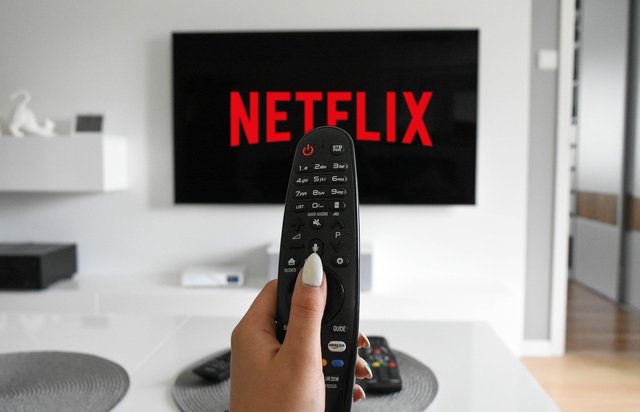What is Machine Learning (ML) - A Netflix Example?
For some time now, I've been wanting to do a series of fundamental posts and writing about what machine learning really is, seems to be a great start. So what is Machine Learning or ML for short? Let's dive in.
What is Machine Learning (ML)?
There are several definitions for ML and I'm sure you can google and find them. However, my passion has always been to simplify complex phenomena so that just about anyone who wants to understand can understand them. Hence, I'll give a definition here of ML that will hopefully fulfil this passion of mine.
ML is both the art and science of making any programmable interface to think and/or act in a mostly human centric world. We'll unpack this definition in a bit but before I do so, I'll ask that while you can always borrow my definition of ML in any post or for any use you choose to, please always do credit me appropriately. Now, let's unpack our definition of ML.
ML is both an art and a science
This part of the definition is what trumps most people about ML. To the masses, ML must be only science (or maths) but anyone who's been initiated into the world of ML or to one who is experienced using ML methods knows that ML is equally art just as it is science. The component methods and techniques are obviously science but the gluing together of these methods into a usable ML application is mostly art. Let's use an example to illustrate this point further.
Take the Netflix recommendation engine for example. The specific ML technique used to recommend the next movie to watch is clearly hard core science. However, for that specific algorithm to work, Netflix will need you to watch at least hundreds of movies. That is the way ML models work - they require tons of data to achieve any reasonable degree of accuracy. Clearly, requiring that you watch hundreds of movies to serve you recommendations that are expected to be reasonably accurate means that Netflix will have to assume that you must also be an ML model yourself to be able to do nothing else for weeks (not even sleeping) but to sit and watch its movies or accept it's recommendation engine will never work for you for any practical amount of time you intend to use its services - you'll probably not renew your subscription after a few months of wrong recommendations.
To solve this problem, Netflix had to do delicate but very beautiful art work. Netflix first divided each of its movies into their respective genres and its customers into biographical categories using what we call Unsupervised Machine Learning. For example, a movie can be characterized as a romantic comedy genre (it is important to note here that it is possible that Netflix's characterization may not match the genres we are used to such as romcom, because it's genre categorization is most likely mathematical and not practical). The next thing Netflix did was genius - Michelangelo level genius. Netflix used the biographical data you supply them upon registration to train an ML model to recommend movies based on such biographical data and the mapping to their genre categorization. For example, their ML model might suggest that a 24 year old single female, living in Connecticut, and living alone is expected to want to watch Must Love Dogs. The type of ML model it uses here is called Supervised Machine Learning that maps input (biographical categorization) to output (genre classification). Netflix, now uses this knowledge to recommend your initial set of movies. As you continue to watch (and click on those stars indicating how much you like a movie), Netflix then starts to create a truly personal recommendation engine for you but again does so in a truly artful way. It doesn't immediately decouple your recommendations from the biographical-genre mapping space of its users, but rather de-weights its impact gradually as you continue to watch more movies. Do you see any science in that? Art is the way to make the science of ML work in the real world.
An intelligent question you can ask is what happens when you give a recommended movie a low rating in Netflix. Then, the 3rd type of ML, called Reinforcement Learning (RL) kicks in. In using RL, Netflix utilizes the ratings you provide as a reward mechanism into training its personalized recommendation engine for you. The higher the rating, the higher the reward such a movie genre accumulates for you and the more it recommends movies from such genre for you. It does not mean that movies from other genres will not be recommended, as there is a randomization aspect to RL but the more you select movies from a genre to more the genre's probability of being selected increases.
ML can only be embedded in programmable interfaces
Unless your grandmother's special mug has a computer chip embedded in it, it cannot be expected to perform ML tasks in the future like filling itself up with coffee on its own. The point is ML techniques are mathematical models that need to be programmed to be useful. To that end also, any programmable interface can be used for ML. This is why your car, TV set, and maybe a mug in the future, can perform sophistical ML processes because they have (or may have in the future, in the case of the mug) programmable interfaces.
ML models think and/or act in a human centric world
The whole idea of ML and why it has been such a remarkable innovation is that its models can be made to think and/or act like a human would. In fact this was the whole idea behind the Turing Tests developed by Alan Turing the father of computer science, which supposes that any machine can be termed intelligent (in its thinking and/or acting) if it can fool a human into thinking it is human. If such a machine can't think and/or act as a human, it clearly cannot fool another human. Almost all research into developing future ML models has been on improving either their thinking or acting or both. For example, consider the Miko Robots used by children from 8 years old. Clearly their success must be in the ability of these robots to fool kids into having intelligent conversations.
Also, in its acting and/or thinking, ML models must do so in a largely human centric world or else, no matter the degree of scientific or artistic sophistication, it can not be called ML. This assertion can be most clearly understood, not surprisingly by looking at the computer world. Compilers have been developed using some of the techniques used in ML today but were never called ML because they were used (or acted) mainly in a non-human world. Not until those models and techniques began to creep into our everyday lives were they called ML.
In Summary
So that is it for today and I hope you enjoyed our journey on what ML is (and is not). In subsequent articles, I'll be describing the 3 types of ML which include Supervised Learning, Unsupervised Learning and Reinforcement Learning, touched on a little bit in this article but will be expanded on more.
Till then, stay safe and have a joy filled holidays.
Yours in Learning,


Have a witness !BEER
Hi @aiplusfinance
Very good post, no doubt that I have been left with a pretty clear idea of what ML is, explained with a tool that is literally at the hand of many.
Thank you for such a simple explanation.
I hope to see the other explanations later.
Thanks @josevas217 for your kind comments. Yes, the goal is to explain some of the more complex concepts regarding ML/AI to anyone who wants to understand them.